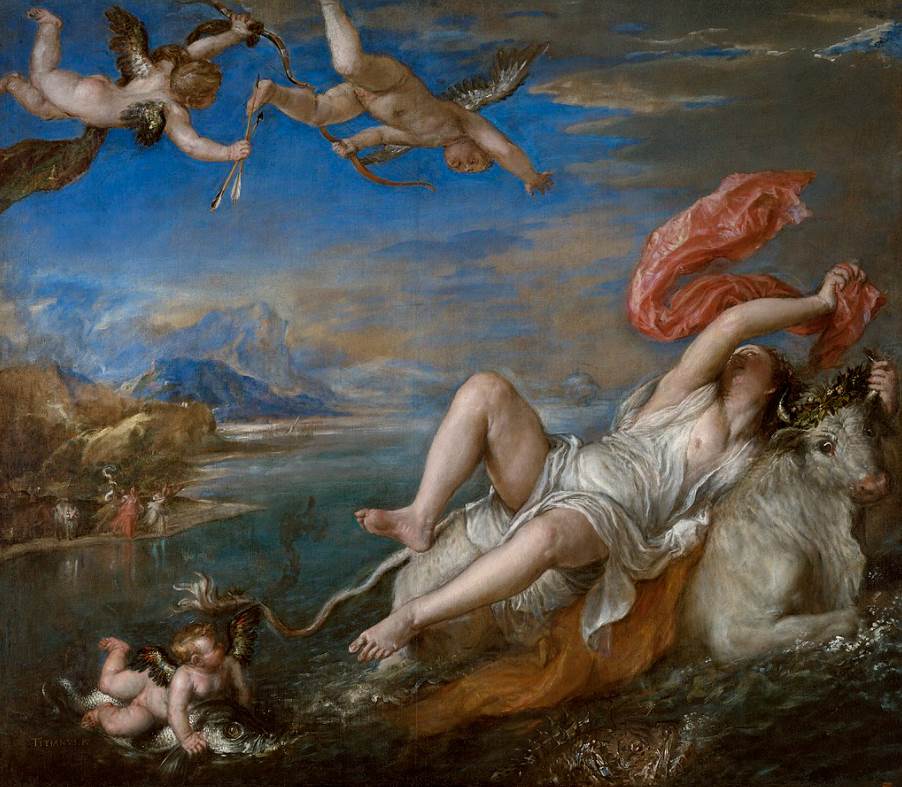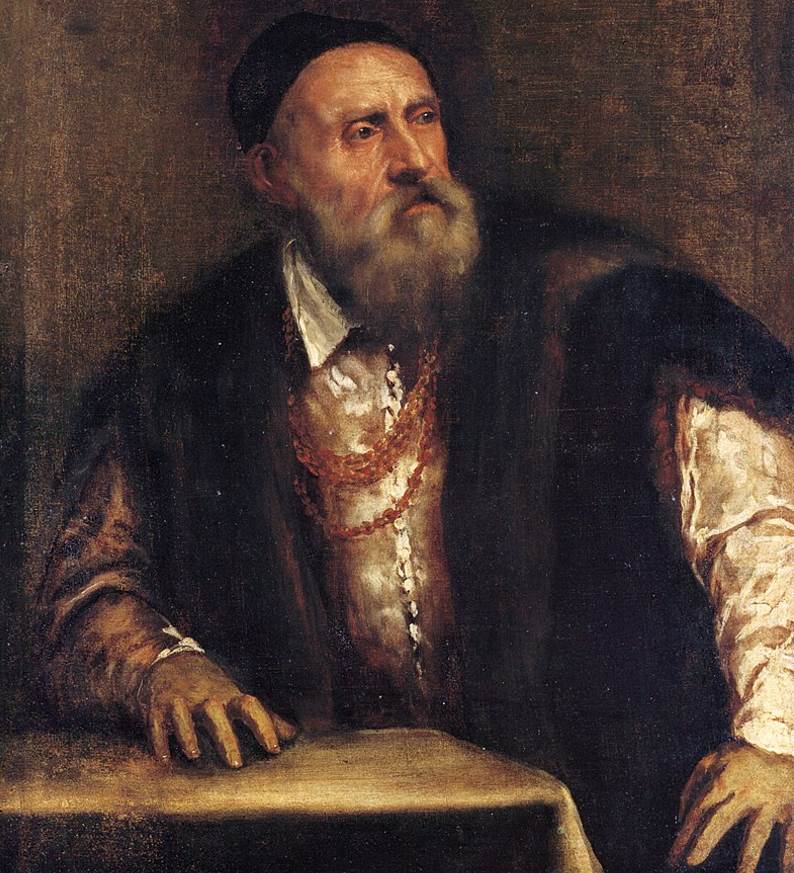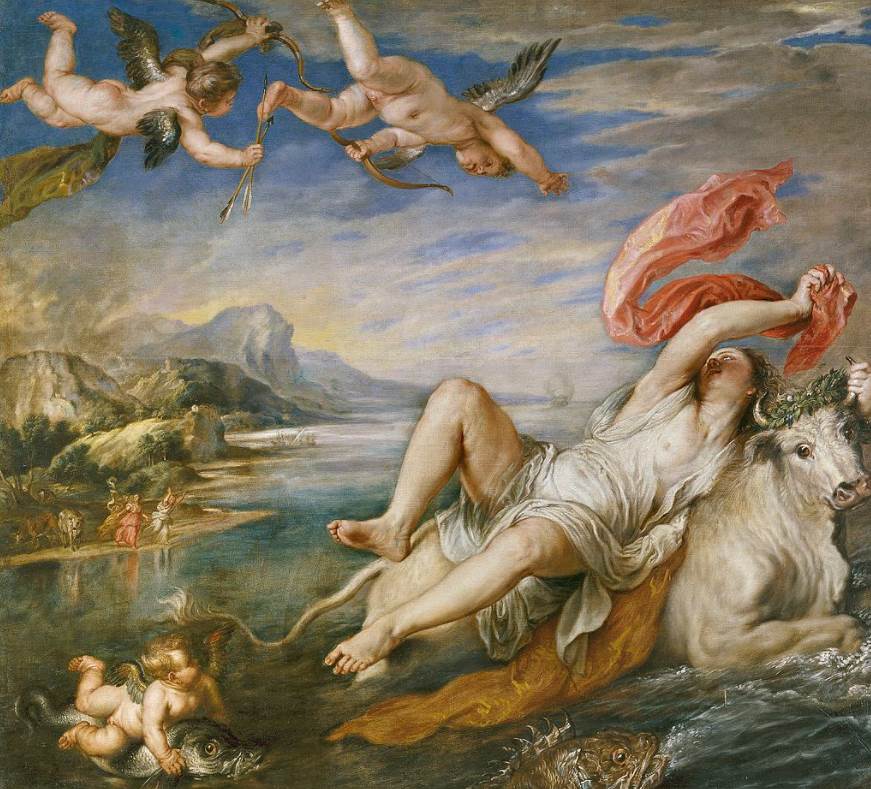Some of the most amazing Renaissance paintings of the 16th century were 7 works produced by one of the most renowned artists of the Renaissance, a man named Tiziano Vecelli (1490-1576).
In this article, you’ll discover some of the most interesting facts about “The Rape of Europa,” one of the most remarkable works of art in the oeuvre of Titian.
1. It was painted in the early 1560s
By the time Titian started working for King Phillip II of Spain in the 1550s, he was already considered to be one of the greatest masters alive. Despite this notion, he was extremely self-critical during the final decades of his long life and often endlessly reworked his paintings.
He first painted the Portrait of King Phillip II of Spain (1527-1598) in 1550, a painting that was presented to Queen Mary of England (1516-1558) to ask her hand in marriage. This worked out well because they married in July 1554.
The Rape of Europa was painted between 1560 and 1562 and it was delivered to his important patron in 1562.

2. It’s one of the so-called “poesie” produced for the King of Spain
King Phillip II of Spain was a great patron of the arts and commissioned many works from Titian. These not only included his portraits but also a large number of religious paintings which were to be used in his effort to fight the Protestant Reformation.
This painting was one of the so-called “poesie” that Titian produced for the Spanish king during the 1550s and 1560s. This series consisted of 7 large paintings depicting scenes from Greek mythology.
Some of the most famous works in this series are “Diana and Actaeon” and “Diana and Callisto” (1556-1559), 2 paintings acquired by the National Galleries of Scotland and the National Gallery in London for £50 million and £45 million respectively.

3. It depicts a story featuring Zeus and Europe
The painting depicts Europa, a Phoenician princess in Greek Mythology and the mother of King Minos of Crete, as she is being dragged off by a bull. This bull is Zeus disguised as this wild animal.
Zeus was the god of sky and thunder and the king of the gods living on Mount Olympus. He used a trick to first disguise himself as a bull and then ask Europe to climb onto his back.
We can see the moment that Zeus carries Europe into the sea towards the Greek island of Crete. The story ends pretty well because she becomes the first Queen of Crete and the couple had 3 children together.
4. It’s possible that Titian wasn’t inspired by Ovid’s Metamorphoses
Although this poesie series depicts stories derived from Greek mythology, most of them were derived from the most famous work of a Roman poet named Ovid (43 B.C.-18 A.D.).
This man lived during the reign of the first Roman Emperor Augustus and ended up being banished by him for unknown reasons. The Rape of Europe was believed to be derived from his book Metamorphoses, but this might not be the case.
Art historians generally agree that Titian was inspired by the work of another Greek-Roman poet named Achilles Tatius, a man who lived in the 2nd century A.D.
His book was named Leucippe and Clitophon and was published in Italian in 1546, shortly before Titian painted his masterpiece. The dolphins, the Cupid, Europ’s clothes, and the way she lies on the back of the bull all resonate with the description in this book.

5. The word “rape” doesn’t imply the act of sexual violence
There’s a sea monster in the foreground, Europa’s legs are slightly opened, and the look on her face is one of sheer terror. Yet, the name “rape” isn’t a reference to the despicable act of sexual violence but simply means “abduction.”
Europa is being dragged off by the bull, away from her homeland, and the helpless position she finds herself in still implies this. We can also see her waving a red scarf which is a symbol of imminent danger.
Two angels can be seen on top of the painting and one is chasing the bull riding a dolphin in the sea.
6. The painting was greatly admired by a famous Baroque artist
This remarkable painting by the renowned Italian artist doesn’t fit the ideals of the Renaissance. The bold brushstrokes, the vibrant horizontal composition, and the vivid use of colors resemble the artworks of the famous Baroque artists half a century later.
When Famous Flemish artist of the Baroque period Peter Paul Rubens (1577-1640) came to Spain on a diplomatic mission, he studied the paintings of Titian in the Royal collection together with the Spanish court painter at the time Diego Velázquez (1599-1660).
Although Rubens already developed his distinctive Baroque style featuring exaggerated drama, the paintings still inspired and influenced him. He produced a replica of Titian’s painting between 1628 and 1629 with dimensions of 182.5 × 201.5 centimeters (71.9 × 79.3 inches).
This remarkable work of art in the oeuvre of Rubens is now part of the collection of the Prado Museum in Madrid.

7. How big is The Rape of Europa?
The 7 paintings of the poesie series, of which “The Death of Actaeon” is sometimes excluded since it was never delivered, are all relatively medium-sized to large works of art. They aren’t of monumental scale because they had to be delivered from Venice to Madrid.
The Rape of Europa by Titian has dimensions of 178 cm × 205 cm (70 in × 81 in), which is about the same size as Diana and Actaeon and Diana and Callisto.
8. Where is the painting located today?
King Phillip V of Spain didn’t have the same love for art as his predecessors because he decided to give away some of the paintings as gifts.
This particular painting was given to the French ambassador in Spain, the Duke of Gramont (1641-1720), who in turn gave it to Philippe II, Duke of Orléans (1674-1723).
It resided in the extensive Orleans collection for most of the 18th century and was eventually bought by American art historian Bernard Berenson (1865-1959) in 1896 on behalf of art collector Isabella Stewart Gardner (1840-1924).
She was the first American to own a painting by Titian. It became one of the most famous attractions in her museum, the Isabella Stewart Gardner Museum in Boston, Massachusetts, and remains part of this museum’s collection today.



